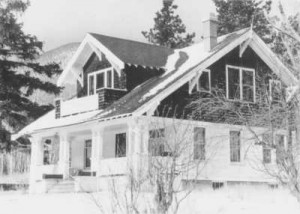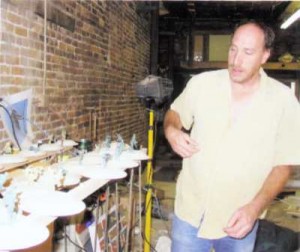Article by Marcia Darnell
water – December 2003 – Colorado Central Magazine
WATER MAY BE THE LIFEBLOOD of the San Luis Valley, but unity is its heart.
The Statewide Water Supply Initiative invited a score of water users to a roundtable discussion on October 16 to decide what’s important when it comes to water in the Rio Grande Basin. The panel represented environmental groups, recreational users, ranchers, farmers, and government, with public input sought in an evening session.
That discussion is crucial now, with the valley in the worst drought on record. According to the Division of Water Resources, 2002 was the driest year since 1890. Last year saw the lowest annual flow of the Rio Grande, at 24 percent of normal.
“Since 1996, we’ve had five dry years, 1996, 1998, 2000, 2002, and 2003,” said Steve Vandiver, the Division III engineer, “and the long-range forecast doesn’t indicate above-normal flows for 2004.”
The Rio Grande Basin drains about 8,000 square miles. The San Luis Valley, comprising six counties, but less than 50,000 people, uses 85 percent of its water for agriculture, with 600,000 acres irrigated. The valley’s unconfined aquifer has a 1 million acre-foot water deficit since 1976, Vandiver said.
The SWSI project, therefore, has been welcomed in the valley. The group was diverse, but the commonality of living and working in a valley that’s a desert kept the talk from becoming a debate.
“When the valley wants to get something done, we get together and get it done,” said Ray Wright of the Rio Grande Water Conservation Board. “When we fail, it’s when we squabble with each other.”
The discussion, aimed at defining objectives for the project, was congenial and inclusive. The group conceded that the valley can’t increase the amount of water nature sends, so it has to better manage what it gets. They also agreed that the water needs of agriculture, recreation, wildlife, residents, and tourism are inextricably linked.
Kate Booth-Doyle, representing the Rio Grande/Rio Bravo Coalition, noted that in nature, water supply has always been unreliable.
“When you have drought years and the river runs dry and the fish die,” she said, “how can the river rafting guide and the fly fishing guide keep their businesses open?
“In this valley,” she continued, “agriculture and the environment have worked hand in hand. We don’t all get what we want, but we’ve been able to get what we need.”
RICK BROWN, SWSI project manager, said he was impressed with the cohesiveness of the panel.
“This roundtable has worked on a lot of issues together, and they seem to be very sensitive to each other’s concerns,” he said. “I’ve seen sensitivity in the meetings in other basins, but not on this level. It’s making this process move along quickly.”
Several panelists agreed that demand has exceeded supply, and that lowering expectations is just as important as increasing storage.
“We can utilize our storage and we have a great system,” said Wright, “but we’re all kind of myopic right now. We’re like Denver was last spring when they had reservoirs at 20 percent of normal, but with no mandatory watering restrictions.”
Whether Referendum A passes, and how that affects storage, flows, and other water issues in the valley, remains a concern. For a valley that has long fought to protect its water, it means more discussion in the future.
For more information on SWSI, check out cwcb.state.co.us.
Marcia Darnell lives in Alamosa, and is now the official Denver Post stringer for the San Luis Valley.


